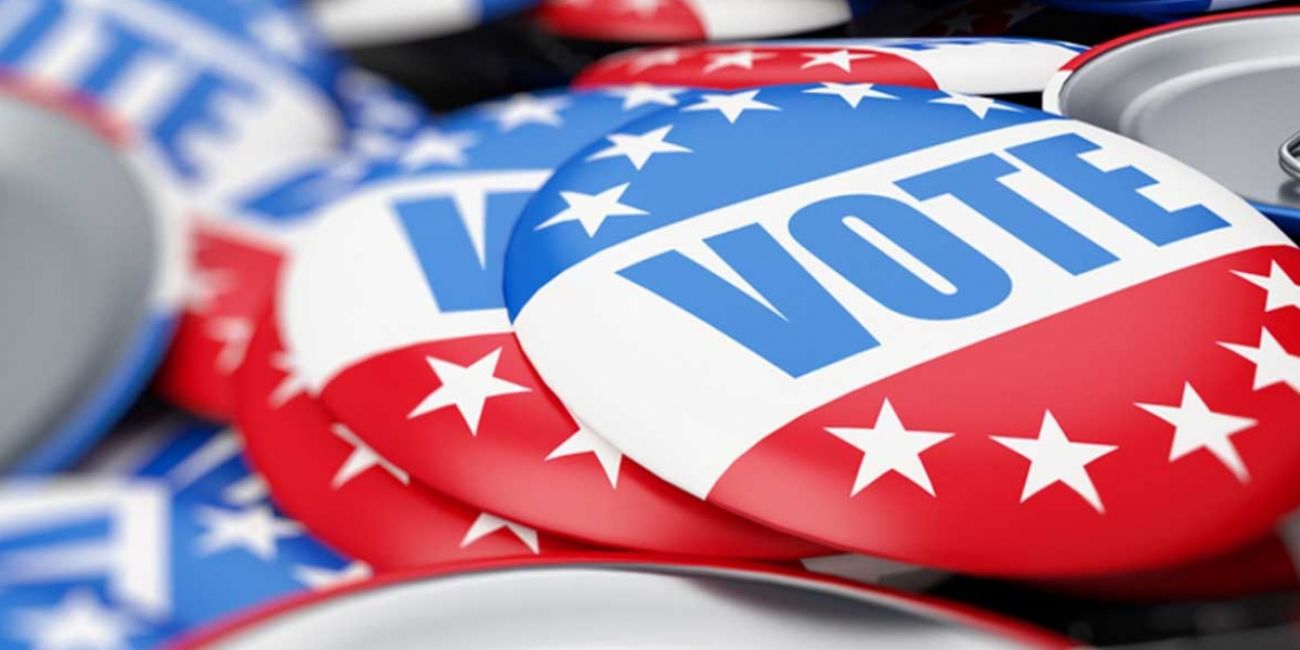Michigan voting 2020: What to know about intimidation, write-ins and more

Michigan is days away from the presidential election, which is expected to break turnout records amid an unprecedented election cycle.
So far, 3.25 million Michiganders have requested absentee ballots and 2.6 million of them have been returned. Another 1.75 million people are expected to vote in person on Tuesday, Secretary of State Jocelyn Benson said this week, topping the previous record set in 2008.
As Election Day approaches, Bridge Michigan is asking readers for help informing coverage. You answered the call.
Please continue to tell us what you want to know here.
What can poll watchers do? What can’t they do?
You may be hearing about both “poll watchers” and “poll challengers.” In Michigan, these are different roles with different rights.
Poll challengers are official election watchers who are nominated by political parties or other organizations and must carry ID. They’re allowed to observe absentee ballot counters and election workers in voting precincts, examine voting equipment, inspect poll books and voter registration lists (without touching them), stand behind the election workers’ processing table (as long as they don’t get in the way), and stay in the precinct after polls close until poll workers finish their work.
Those challengers can submit “challenges” to election officials if they believe election law is being violated and can challenge a voter’s right to vote — but only if they have “good reason” to believe the voter isn’t eligible to vote or has voted absentee.
Challenges can’t be based on the “impression” that someone is an ineligible voter based on their race, ability, outward appearance, English language skills or other traits.
Poll watchers don’t have to be nominated by anyone, they must stay in the public area of the voting precinct and they can’t issue any challenges.
Neither poll watchers or poll challengers are allowed to approach or question voters.
Voter intimidation is illegal under state and federal laws, and officials with the Attorney General’s office and local law enforcement are expected to be available on Election Day to respond to any potential problems.
“All Michiganders have the right to vote without fear of intimidation or violence,” Gov. Gretchen Whitmer said this week. Things that may constitute voter intimidation may include: people who are not poll workers asking for documentation; photographing or videotaping voters; disseminating false or misleading election information; directly speaking to or questioning voters; or blocking the entrance to polling places.
What should I do if I experience voter intimidation?
Michigan Attorney General Dana Nessel’s office will have a hotline to contact if you believe you are experiencing voter intimidation or see it happening at your polling place.
Remember your rights — here’s a full list of what poll challengers and poll watchers are allowed to do and what they’re not allowed to do. And if you’re already in line to vote when your polling place closes at 8 p.m., you’re entitled to vote even after hours. Just don’t leave the line.
Can I take a photo of my ballot? Can I take a photo inside the polling place?
You can take a photo of your own ballot inside the polling place (or at home if you’re voting absentee.)
You cannot, however, take a selfie inside the voting booth or anywhere in the voting area of a polling place. You can’t take a photo of anything else in the area of the polling place where people are voting, either.
You also can’t share any photos of your voted ballot on social media within 100 feet of the polling place.
Which ballots will be counted first, absentee or in-person?
All ballots are counted as soon as possible. For absentee ballots, that’s beginning at 7 a.m. on Election Day. For in-person ballots, they’re counted as soon as the voter feeds them through the tabulator.
Can I transport an absentee ballot for an elderly family member? Can I sign it for them?
The only people who can transport a filled-out absentee ballot to the clerk’s office or drop box for a voter are members of their immediate family, a member of their household, a postal carrier or an election official.
According to state election law, immediate family members include someone’s father, mother, son, daughter, brother, sister, and spouse.
So if your relationship to your elderly family member is one of those, you can transport it to the clerk. But if, for example, your elderly family member is a grandparent and you don’t live together, you cannot transport it. But you can give your family member a ride to the clerk’s office or to a dropbox to drop off their ballot.
You cannot sign it for them. The outside of the envelope must be signed by the voter. If your family member cannot physically sign their own ballot, there are still options for them, including signing a “mark” such as an “X” or using a signature stamp.
If you’re unsure, call your local clerk, who will outline the options and may come out to your home (following safety precautions) to help you.
How can I tell if the clerk received my absentee ballot?
Go to this website hosted by the Secretary of State’s office and plug in your voter information. On the right-hand side should be a box titled “absentee ballot” indicating when your ballot was received.
If there is no date listed under “ballot received,” that means the clerk has not yet received your ballot.
How does the clerk determine whether the signature on my ballot is valid? What kind of signature should I use?
When the clerk receives your absentee ballot, they scan the barcode on the ballot into a computer in the clerk’s office. That pulls up the signature you have on file with the Qualified Voter File, the master database with all the state’s voter information.
A worker in the clerk’s office will look at the signature on your ballot and compare it with the one on file. If it’s significantly different, they will contact you and ask you to come in and correct the signature.
Usually, if you have a driver’s license or state ID, the signature in the Qualified Voter File is the signature on your ID.
I don’t currently have a permanent place to live. How can I register and vote?
People experiencing homelessness can still register and vote in Michigan.
Laurel Burchfield, the associate director for the Michigan Coalition Against Homelessness, recommended that people experiencing homelessness should go to a shelter, church, food pantry or other service they interact with and ask for a letter indicating you stay there for the purposes of voter registration. They can also tell you the location of the local clerk office.
Go to the clerk’s office and present them with the letter. Burchfield recommended you request an absentee ballot while at the clerk’s office and fill it out there or return it to the clerk before 8 p.m. on Election Day.
She also warned that when you update your voter registration, it also updates your ID. If you have an ID, make sure to update your address and voter registration with the Secretary of State’s office when you find a permanent residence.
I requested a ballot but never received it; I got a ballot in the mail, but I lost it; I sent my ballot but the clerk’s office hasn’t indicated they’ve received it; or I have an absentee ballot but I want to vote at the polls. Can I still vote?
Yes. Here’s what Ingham County Clerk Barb Byrum says to do in each of those situations:
- Never received ballot: Go to your local clerk’s office and request a new absentee ballot, vote it and turn it in in-person.
- Received but lost ballot: You must sign an affidavit saying you don’t have your ballot. You can do it at your polling location on Election Day or go to your clerk’s office ahead of Election Day to do so.
- Website indicates the clerk's office didn’t get ballot: Call your clerk and ask whether they received it — they may be behind on data entry. If not, they will tell you how to cast a ballot. Do this ASAP.
- Have ballot, want to vote in-person: Take your unmarked ballot to the polling place with you on Election Day. They will spoil your ballot and give you a new one to feed through the tabulator at your precinct.
You can find your polling place and your clerk’s office’s hours by entering your voter information here.
Who are the accepted write-in candidates for this election? Can I write in someone else’s name?
Only candidates who filed a declaration of intent to seek election with the Secretary of State’s office by Oct. 23 can count as potential write-in candidates.
You can find the full list of eligible write-in candidates here.
If you write in the name of someone who is not on this list or for the wrong office, that vote for that race doesn’t count. (But the rest of the votes on the ballot do).
Same goes for writing in “not them” or “neither.”
Editor’s note: This story was updated Oct. 30 to clarify that immediate family members can drop off absentee ballots for elderly relatives. An earlier version was incorrect.
See what new members are saying about why they donated to Bridge Michigan:
- “In order for this information to be accurate and unbiased it must be underwritten by its readers, not by special interests.” - Larry S.
- “Not many other media sources report on the topics Bridge does.” - Susan B.
- “Your journalism is outstanding and rare these days.” - Mark S.
If you want to ensure the future of nonpartisan, nonprofit Michigan journalism, please become a member today. You, too, will be asked why you donated and maybe we'll feature your quote next time!




